The face, hands and décolleté are the most exposed areas of the body to UV radiation. And while sun, in the right measure, can have an uplifting effect on mood, provide vitamin D, improve circulation and increase metabolism and productivity, excessive exposure is very harmful. Sun-induced skin damage includes premature skin ageing, hyperpigmentation and even skin cancer. It is therefore extremely important to give facial skin specific and consistent protection throughout the year.
Signs & Symptoms
How to recognise sun damage on facial skin
Unprotected and excessive exposure to UVA and UVB rays can have both short- and long-term consequences, leading to premature skin ageing, immune suppression and even skin cancer. Importantly, these negative effects don’t only apply to holidays. UV radiation, especially UVA rays, are present all day, every day – winter as well as summer and on cloudy days as well as sunny ones – so facial sun protection should be considered as much a part of a daily skin care routine as cleanser, toner, or any other products, such as moisturisers and anti-ageing or hyperpigmentation care.

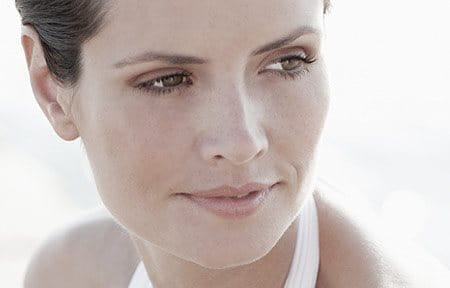
Facial skin has different properties to skin on the rest of the body:
- It is thinner,
- has smaller cells,
- more pores and,
- because of higher numbers of sebaceous glands, it secretes more lipids.
- It is also exposed to the environment on a day-to-day basis, making it prone to the effects of external factors such as wind, cold, smoke, pollutants and, of course, UVA and UVB rays. Read more about skin structure.
And while body skin is often covered, facial skin is exposed to these external factors year-round. As a result, it needs to be protected from the sun with products specially designed for its needs. Read more about the effects of the sun on body skin.
Facial skin can be affected in a number of ways by UV radiation. This can vary from premature skin ageing to skin cancer.
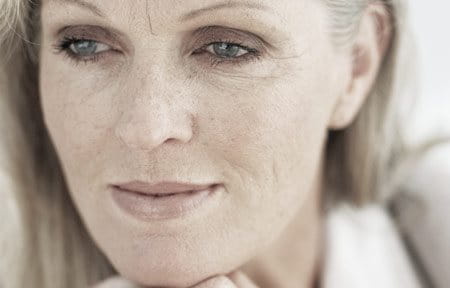

It’s important to recognise the signs and symptoms of the most common conditions:
Premature skin ageing
There is no doubt that UV radiation is one of the most important factors in premature ageing of the skin. Symptoms include the appearance of wrinkles, loss of elasticity, age spots and rough skin.
Polymorphic light eruption (PLE)
As little as 20 minutes of strong sun can trigger PLE, a rash that comes up after exposure to sun. The rash can take many forms including small red bumps, larger red areas and blisters.
Hyperpigmentation
This is a distressing skin condition in which dark spots appear on the skin. It is largely caused by excessive sun exposure.
Sunburn
Red, sore skin caused by over-exposure, and lack of protection, to the sun. Although the whole body is at risk, most common areas are those that are in direct contact with the harmful UV rays ie shoulders, face, top of ears, bald scalps, tops of feet.
Herpes simplex labialis
One of the negative effects of UVA is suppression of the immune system. This makes skin vulnerable to viruses such as herpes simplex, also known as cold sores. These are small blisters that develop on the lips or around the mouth.
Skin cancer
Skin cancer is most likely to appear on skin that has been over-exposed to the sun, so facial skin is at risk.
Read more about the negative effects of sun on skin.
Attention
If you have any concerns about your skin, it is important to seek professional advice from a dermatologist.
Causes & Triggers
How to minimise the risk of UV exposure
The list of sun-related skin conditions may be long but the good news is that many can be avoided by:

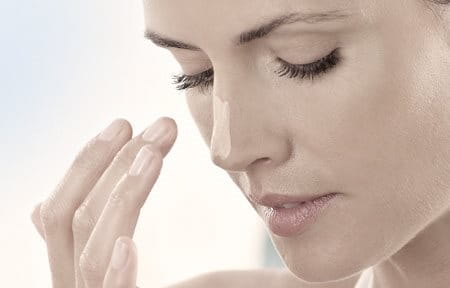
- Staying out of direct sun, particularly when it’s at its strongest intensity between 11am and 3pm.
- Using sun protection products on exposed parts of the body and on the face as part of a daily skin care routine.
- Thinking about sun protection even on cloudy days.
- Ensuring babies and small children are kept away from direct sun exposure.
- Keeping eyes protected by wearing sunglasses with UVA and UVB filters.
- Adhering to the needs of individual skin types.
- Covering exposed skin with clothes and the head and face with a wide-brimmed hat.
- Paying attention to potential side-effects of any prescribed medication.
Read more about factors that influence skin.
Sun protection is important and can’t be ignored. Despite health warnings about the dangers of over exposure to the sun, the incidence of both non-melanoma and melanoma skin cancers has been increasing over the past decades. The key to staying safe in the sun is about understanding the risks, and adjusting behaviour to make sure skin is properly protected at all times - by using the shade and covering up, as well as choosing the right sun protection products.
Contributing Factors
Factors that increase the risk of sun damage
There are several factors that make a person more or less likely to suffer from a sun-related skin condition.

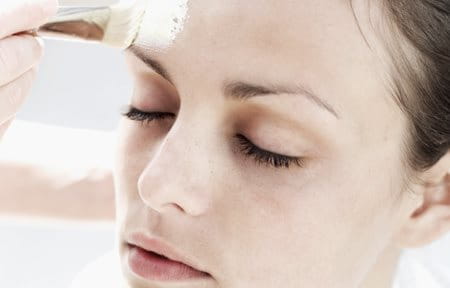
- Age
Prevalence rates of melanoma increase steadily by age band, with 55-64 year olds over three times more prone than 25-34 year olds. - Skin type
Children and people with very pale skin, red or light blonde hair and many freckles are most sensitive to the sun’s rays. Read more about skin types. - Certain skin diseases
Rosacea-prone skin has a compromised skin barrier with increased trans-epidermal water loss and hyper-reactive nerve fibres in its epidermis. It is particularly vulnerable to external stressors - including UV rays - which can cause symptoms including erythema and red bumps. - Medication
Certain medications, including acne treatments, birth control pills and anti-biotics, can increase the skin’s sensitivity. - Genetics
Research has shown that some people have a genetic predisposition to cold sores, which can be triggered by exposure to UVA rays. - Post-dermatological treatments
Chemical peels or laser treatments can leave skin extremely vulnerable to UV rays.
Solutions
How to prevent or repair sun damage
Sun damage can be extremely dangerous, so prevention is key.
Prevention and protection creams and lotions
Given the sensitive nature of facial skin, and its exposure to UV rays all-year-round, it is recommended that sun protection is applied to the face every day, and becomes part of the daily skin care routine:
- Apply the sunscreen generously before sun exposure.
- Avoid contact with eyes.
- Reapply frequently (every 2 hours) – especially after swimming, towelling and sweating – insufficient application of sunscreen will reduce its protective effect.
- Avoid contact with textiles to prevent staining.
Eucerin Sun Products have been developed to meet specific skin types.
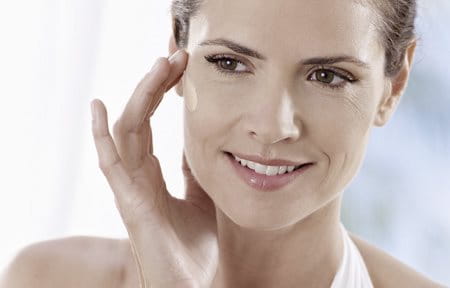
For combination as well as oily or acne-prone facial skin try Eucerin Sun Fluid Mattifying, available as SPF 50+, which provides highly effective protection from UVA/UVB rays. It also helps strengthens skin’s own cell protection against sun-induced damage, and supports DNA repair mechanisms.
For normal, dry and very dry facial skin use Eucerin Sun Crème, available as SPF 50+. Read more about Eucerin Sun Crème.
Eucerin Sun Creme Tinted SPF 50+, suitable for all skin types, also contains mineral tinted pigments for a natural tanned looking skin tone, and also allows the covering up of pigment spots.
Other options
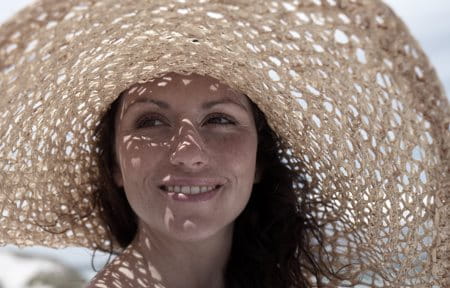
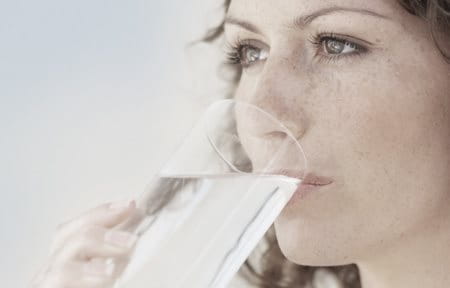
As well as sun protection crèmes and fluids it is important to remember to protect facial skin with a wide-brimmed hat or sun protection umbrella whenever possible and to:
- Keep body and skin hydrated by drinking plenty of water.
- Protect eyes by wearing sunglasses with filters for UV rays.
- Choose a diet that has been proved to play a part in sun protection. Fruit and vegetables that are rich in carotenoids (coloured red, yellow and orange) can strengthen the skin’s natural defences if eaten over a long period of time. Similar effects can be had from diets rich in omega fats (olive oil, oily fish), vitamin C, vitamin E and flavonoids and low in red meat and dairy.
Read more about sun protection for body skin.
Our brand values

We deliver a holistic dermo-cosmetic approach to protect your skin, keep it healthy and radiant.

For over 100 years, we have dedicated ourselves to researching and innovating in the field of skin science. We believe in creating active ingredients and soothing formulas with high tolerability that work to help you live your life better each day.

We work together with leading dermatologist and pharmacist partners around the world to create innovative and effective skincare products they can trust and recommend.





